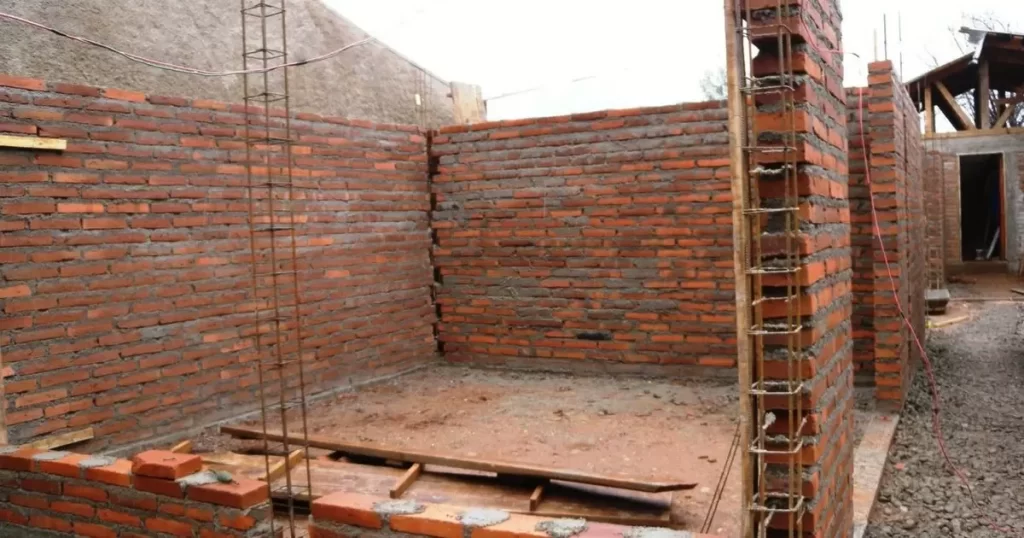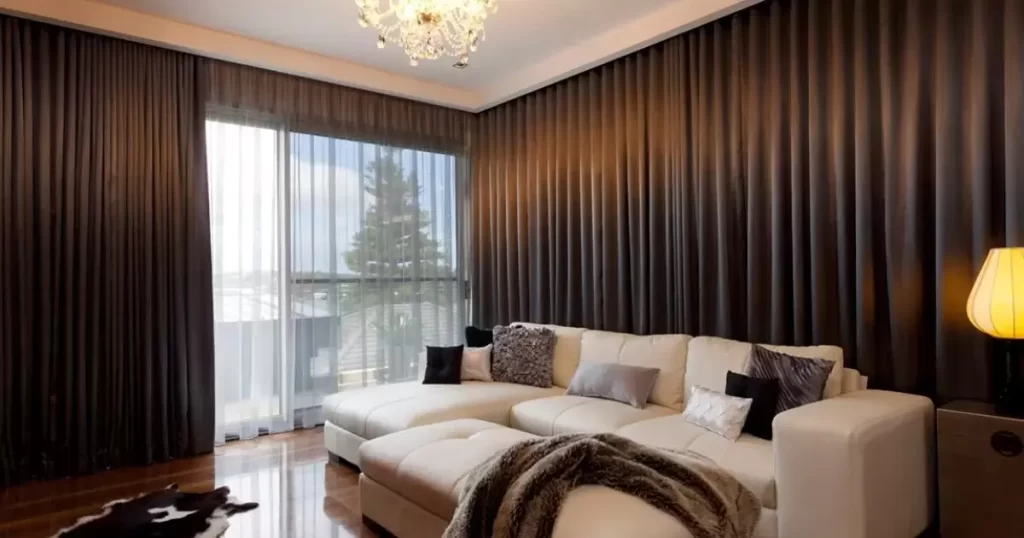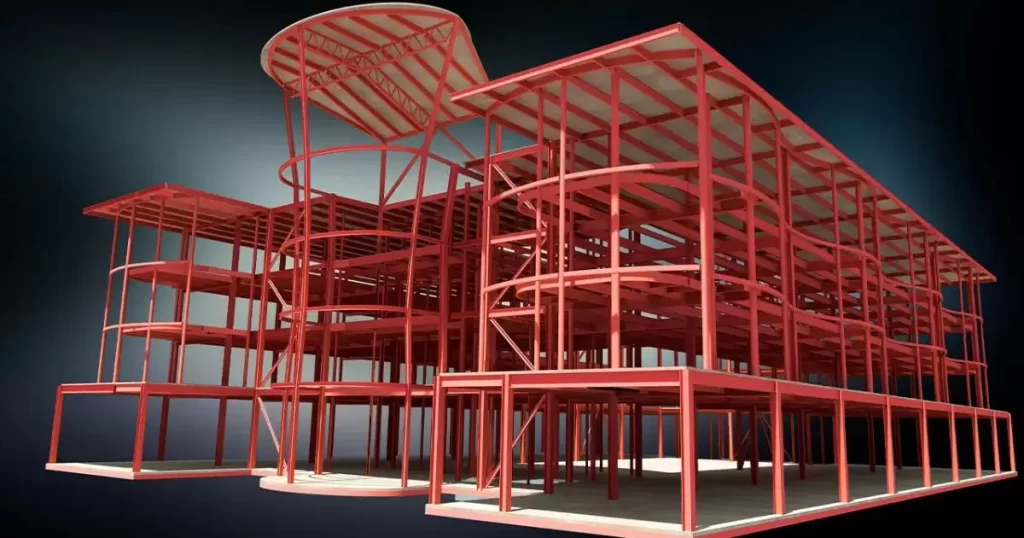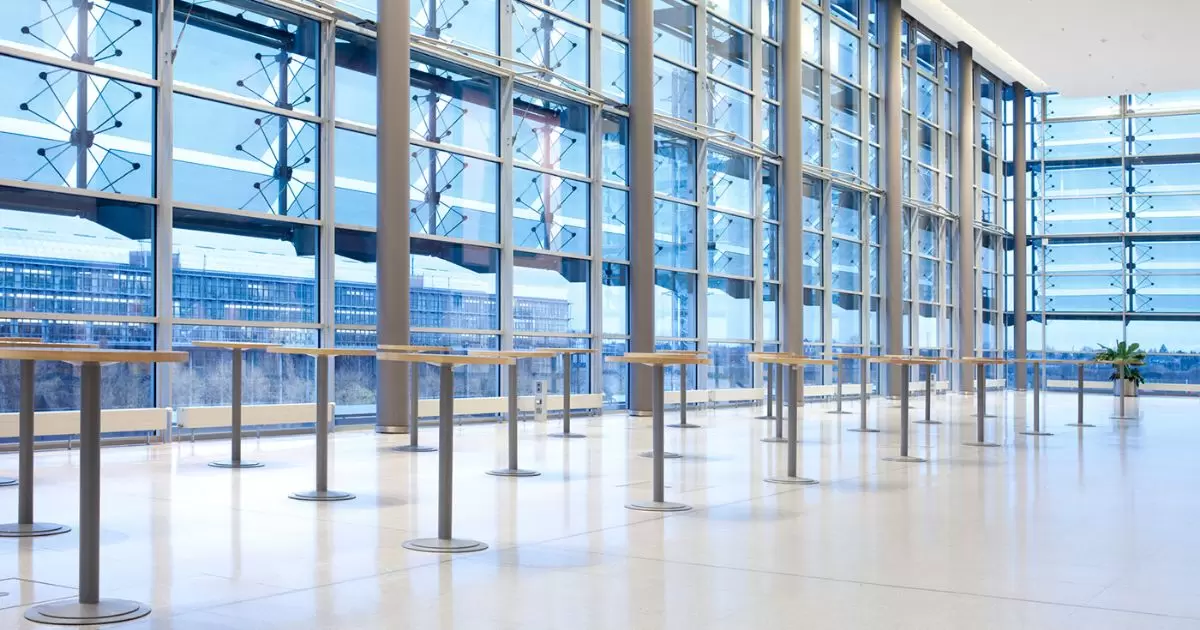A curtain wall in construction is a non structural outer covering of a building typically made of glass and metal that doesn’t carry any weight of the building itself. It acts as a barrier against weather and often enhances a building’s aesthetics. This system allows natural light to enter the structure while providing insulation and protection from external elements.
Curious about modern building marvels? What is the Curtain Wall in Construction? Dive into the fascinating world of architectural innovation and discover how this transparent shield transforms skyscrapers. Join us to unravel the secrets behind this sleek, functional design uncovering how it blends aesthetics with functionality in modern architecture!
Explore the essence of modern architecture with Curtain Walls in Construction. Unveil the exterior envelope that adds both elegance and functionality to buildings. Stay with us to uncover how these structural marvels redefine aesthetics and functionality in the construction landscape. Keep reading to grasp the essence of this innovative building technique.
Method of wall construction

The method of wall construction refers to the technique used to assemble and erect walls in buildings. Various methods exist including traditional bricklaying concrete block construction timber framing and modern prefab panel systems.
Each method offers unique advantages in terms of cost, durability and speed of construction catering to diverse architectural needs and structural requirements.
Builders often select a method of wall construction based on factors such as the building’s design intended use location and desired aesthetic much like how Hobby Lobby sells curtains tailored to different styles and preferences.
Whether it’s the timeless solidity of bricks or the rapid assembly of prefabricated panels the chosen construction method plays a pivotal role in shaping the overall strength appearance and functionality of a structure.
Historical Evolution of Curtain Walls
The historical evolution of curtain walls traces back to ancient civilizations like Rome and Egypt where rudimentary versions offered protection while allowing light into structures. However the concept truly blossomed during the 19th century with advancements in iron and glass production during the Industrial Revolution.
These innovations birthed the first modern curtain walls seen notably in the Crystal Palace in London showcasing the potential of these walls in architecture.
Key Components of Curtain Wall Systems

Curtain wall systems comprise several vital components essential for their functionality. The first key element is the mullions and transoms which form the structural grid supporting the panels. These sturdy vertical and horizontal members provide the framework for the entire system.
Another crucial component is the glazing, usually glass panels offering transparency and allowing natural light into the building while maintaining insulation and weather resistance.
Additionally seals and gaskets ensure airtightness and prevent water infiltration crucial for the system’s durability. Together, these components harmonize to create a modern, efficient, and aesthetically pleasing curtain wall system for contemporary architecture.
Purpose and Function of Curtain Walls
Curtain walls serve a dual purpose in construction. Primarily they act as a protective barrier shielding buildings from weather elements like rain wind and temperature fluctuations. Their design also caters to aesthetic enhancement often defining a building’s unique appearance and style.
Functionally, these walls distribute their weight to the building’s structure, easing the load on the framework. Additionally they allow natural light to flood interiors, promoting energy efficiency and creating inviting spaces. Their versatility lies in merging functionality with an architectural statement redefining the modern skyline while ensuring structural resilience.
Types of Materials Used in Curtain Wall Construction
- Glass: Transparent and versatile glass offers aesthetics and allows natural light commonly used in curtain walls for its sleek appearance.
- Aluminum: Lightweight and durable aluminum frames provide structural support while being resistant to corrosion making them a popular choice in modern constructions.
- Steel: Known for its strength steel frames are used in curtain walls for high rise buildings where added support and durability are essential.
- Composite Materials: These combine various elements like plastics, metals and wood to achieve specific properties like enhanced insulation or design versatility offering innovative solutions in curtain wall construction.
Advantages of Incorporating Curtain Walls

Incorporating curtain walls offers numerous advantages in construction. These sleek installations maximize natural light, reducing the need for artificial lighting and cutting energy costs.
They provide exceptional insulation regulating interior temperatures and enhancing a building’s energy efficiency. Additionally curtain walls offer design flexibility allowing architects to create visually stunning facades while maintaining structural integrity.
Challenges and Limitations in Curtain Wall Design
Designing curtain walls faces challenges and limitations rooted in functionality and aesthetics. Balancing structural integrity with the demand for visually appealing energy efficient systems poses a significant challenge.
Weather durability, material selection and installation complexities further add to the intricacies. Moreover meeting stringent safety standards while accommodating architectural visions presents a continual challenge in the evolution of curtain wall design.
Innovations and Trends in Modern Curtain Wall Technology
Innovations and trends in modern curtain wall technology are reshaping the skyline. These advancements encompass cutting edge materials like smart glass that adapts to light and energy efficient designs maximizing sustainability.
New trends emphasize flexibility, integrating green spaces within the walls or incorporating interactive elements. This technology is revolutionizing buildings offering not just protection but also aesthetics and eco-friendly solutions for the cities of tomorrow.
Energy Efficiency Considerations in Curtain Wall Systems
Considering energy efficiency in curtain wall systems involves designing structures that optimize natural light while minimizing heat gain or loss. These systems aim to enhance insulation, reduce reliance on artificial lighting and regulate indoor temperatures efficiently.
By integrating innovative materials and designs, energy efficient curtain walls contribute to sustainable buildings that conserve energy and promote a greener environment.
Common Applications of Curtain Walls in Buildings
- Enhance Aesthetics: Curtain walls are ideal for creating sleek modern facades adding a touch of sophistication to buildings.
- Maximize Natural Light: Utilize curtain walls to flood interior spaces with sunlight reducing the need for artificial lighting.
- Energy Efficiency: Opt for insulated glass panels to improve thermal performance cutting down on heating and cooling costs.
- Noise Reduction: Choose specialized panels to minimize external noise creating a serene environment indoors.
- Customization Options: Explore various materials and designs to tailor curtain walls according to specific architectural needs.
- Structural Support: While non load bearing these walls offer weatherproofing and contribute to a building’s overall stability.
Design Flexibility and Aesthetic Possibilities
Curtain walls offer unparalleled design flexibility and aesthetic possibilities in construction. They enable architects to play with shapes, textures, and colors, creating visually stunning facades that redefine urban landscapes.
From sleek glass structures to intricate patterns, these walls empower architects to craft buildings that are not just functional but also breathtaking works of art, adding character and charm to city skylines.
What is c wall in construction advantages and disadvantages
The curtain wall (c wall) in construction offers a sleek modern aesthetic and maximizes natural light, enhancing the building’s appeal. Its advantages include improved energy efficiency and sound insulation.
However challenges like maintenance complexities and potential water leakage are among its disadvantages demanding vigilant upkeep and specialized installation expertise to mitigate these issues effectively.
Structural Considerations in Curtain Wall Engineering

When it comes to Curtain Wall Engineering structural considerations are pivotal. These encompass the support system ensuring stability and safety of the wall.
Engineers meticulously factor in wind loads, seismic forces and building movements designing robust frameworks that bear the weight while maintaining the wall’s integrity. This careful planning ensures durability and resilience aligning aesthetics with structural soundness in architectural marvels.
Installation Process of Curtain Wall Systems
The installation process of curtain wall systems involves meticulous precision and expertise. It begins with the framework assembly carefully positioning the metal or glass panels. Each element is methodically installed ensuring a seamless fit and weather tight seal.
Once in place the system undergoes rigorous testing to guarantee its resilience against environmental factors. This intricate process demands skillful coordination among experts, culminating in a stunning functional facade that defines contemporary architectural excellence.
Maintenance and Repair of Curtain Walls
| Aspect | Maintenance of Curtain Walls | Repair of Curtain Walls |
| Cleaning | Regular washing with mild detergents or water | Addressing stains, corrosion, or dirt buildup |
| Inspections | Periodic checks for cracks, leaks, or sealant damage | Immediate assessment of damages or structural issues |
| Sealant Replacement | Scheduled resealing to maintain integrity | Replacing damaged or deteriorated sealants |
| Component Inspection | Monitoring brackets, glass panels, and frames | Replacement of damaged components or panels |
| Weatherproofing | Ensuring weather-resistant features remain intact | Fixing leaks or damages compromising weatherproofing |
| Structural Integrity | Evaluating load-bearing capabilities and support systems | Strengthening weakened or damaged structural elements |
This table outlines the key aspects of both maintenance and repair concerning curtain walls addressing different facets like cleaning inspections, sealant upkeep component checks, weatherproofing and structural maintenance.
Curtain Wall vs. Traditional Wall Construction
Curtain walls revolutionize building exteriors by using non load bearing materials like glass and metal providing a sleek modern aesthetic and ample natural light. In contrast traditional wall construction involves load bearing materials like bricks or concrete supporting the building’s weight and often limiting design flexibility.
Understanding the differences between these approaches sheds light on how architecture balances structural integrity with innovative design possibilities.
Partition Wall
A partition wall curtain is a versatile division system used in interior design to separate spaces within a building. It’s typically lightweight and non load bearing made from various materials like glass wood or gypsum board.
These partitions offer privacy defined areas and contribute to the overall aesthetics of a space making it adaptable for various purposes from offices to homes by providing a balance between openness and segmentation.
Structural Considerations in Curtain Wall Engineering

Regulatory standards and codes for curtain wall installation are essential guidelines ensuring safety, durability, and compliance in construction. These codes outline precise criteria for materials installation methods and structural integrity, guaranteeing buildings meet stringent safety benchmarks.
By adhering to these standards professionals ensure that curtain walls withstand environmental forces and perform reliably safeguarding both the building and its occupants. From wind resistance to fire safety, these regulations set the groundwork for meticulous design and installation practices.
Compliance ensures not just the functionality of curtain walls but also the overall structural resilience of modern buildings. Meeting these standards guarantees buildings are constructed to endure and protect in a consistently changing urban landscape.
Environmental Impact of Curtain Wall Systems
The environmental impact of curtain wall systems is a crucial consideration in construction. These systems often made of glass and metal impact energy efficiency and sustainability. While allowing natural light they can also lead to increased heat gain affecting a building’s energy consumption.
Balancing their benefits and drawbacks is essential to create eco friendly structures that optimize energy usage and minimize their environmental footprint. Finding ways to enhance their insulation properties and select sustainable materials remains pivotal for reducing their overall impact on the environment.
Cost Factors Associated with Curtain Wall Implementation
- Material Selection: The cost of curtain walls varies based on the materials used with glass aluminum or steel impacting expenses differently.
- Customization Complexity: Intricate designs or customized shapes increase manufacturing costs affecting the overall implementation expenses.
- Installation Challenges: Factors like building height and access difficulties can escalate labor costs during installation, impacting the budget.
- Maintenance Considerations: Long-term costs include maintenance and repairs influenced by material durability and environmental factors affecting the overall lifecycle expenses.
Case Studies Highlighting Successful Curtain Wall Projects
Case studies spotlighting successful curtain wall projects offer invaluable insights into the power and potential of this construction marvel. These studies showcase real world examples where innovative designs and materials have elevated buildings to new heights both aesthetically and functionally.
Exploring these cases unveils the transformative impact of curtain walls on structures from iconic landmarks to sustainable architectural wonders inspiring future possibilities in construction.
Future Prospects and Advancements in Curtain Wall Design
Advancements in curtain wall design herald a promising future in architecture. Engineers and designers are exploring cutting edge materials like photovoltaic glass and nanotechnology to create walls that generate energy and adapt to environmental changes.
With sustainable practices in focus the future holds potential for self healing structures and smarter more energy efficient designs revolutionizing the way buildings interact with their surroundings.
Moreover, the integration of AI and IoT into curtain wall systems is set to redefine functionality. Imagine walls that dynamically adjust to weather conditions or self-monitor for maintenance needs.
These innovations not only enhance the efficiency of buildings but also pave the way for interactive responsive structures shaping a more sustainable and technologically advanced built environment.
What is wall in building construction
In building construction, a wall serves as a fundamental structural element dividing and supporting spaces within a structure. Walls can be made of various materials like bricks, concrete or wood and play a crucial role in providing stability and support to the entire building.
They also contribute to insulation soundproofing and defining the layout of rooms, ensuring a safe and functional environment within any construction project.
Whether it’s load-bearing walls that bear the weight of the structure or non-load-bearing walls that define spaces within Types of Walls form the building blocks of architecture serving both practical and aesthetic purposes.
They create boundaries, offer privacy and serve as canvases for interior and exterior design making them integral components in any construction endeavor.
Frequently Asking Question ( FAQS )
What is the thickness of a brick?
The thickness of a brick in a curtain wall typically ranges from 3 to 5 inches ensuring structural stability and insulation in construction.
Which cement is best for brickwork?
For brickwork Portland cement stands out as the best choice due to its durability and strength ideal for sturdy curtain wall constructions.
Which cement is the best quality?
The quality of curtain walls often relies on high-grade cement blends known for durability and weather resistance.
Is the RCC wall strong?
Curtain walls unlike RCC walls, aren’t load bearing but offer weather protection and aesthetic appeal.
How thick is a RCC wall?
Curtain walls are typically thin ranging from 2 to 10 inches emphasizing transparency and lightness in modern building design.
Conclusion
Understanding What is the Curtain Wall in Construction? reveals its pivotal role in modern architecture. These transparent shields not only provide weather protection but also redefine aesthetics and sustainability in buildings.
Embracing innovations and trends in curtain wall technology is crucial for ensuring their longevity, functionality and contribution to the evolving landscapes of our cities fostering both form and function in architectural design.
